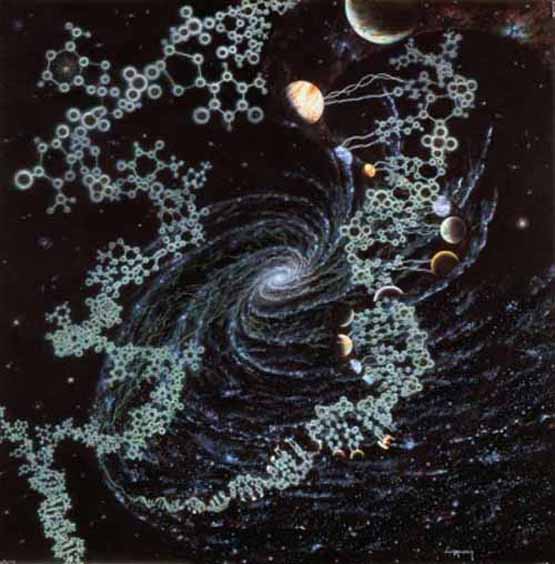

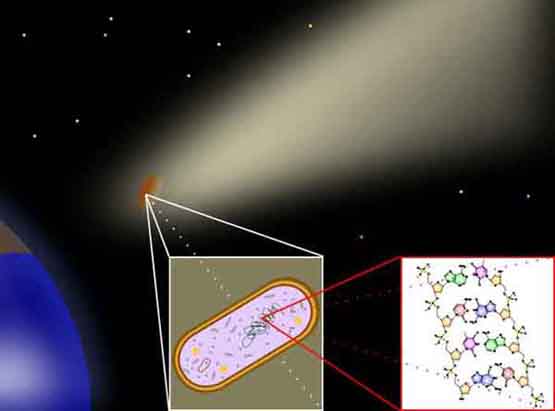
Did life on Earth begin in a rudimentary form in outer space, brought to Earth billions of years ago? In August 1996, a team of scientists discovered that a Martian rock found in Antarctica contained evidence of fossilized life. The four-pound rock showed the presence of carbonate globules excreted by microbes when they were alive on Mars 3.6 billion years ago, at a time the climate on Mars could sustain life as we know it. This discovery proved cross-contamination between Mars and Earth which possibly could have led to the evolution of life on this plant.
Panspermia is the hypothesis that "seeds" of life exist already all over the Universe, that life on Earth may have originated through these "seeds", and that they may deliver or have delivered life to other habitable bodies.
The related but distinct idea of exogenesis (outside origin) is a more limited hypothesis that proposes life on Earth was transferred from elsewhere in the Universe but makes no prediction about how widespread it is. Because the term "exogenesis" is more well-known, it tends to be used in reference to what should strictly speaking be called panspermia. Panspermia does not necessarily suggest that life originated only once and subsequently spread through the entire Universe, but instead that once started, it may be able to spread to other environments suitable for replication.
Some bacteria and animals have been found to thrive in oceanic hydrothermal vents above 100 °C; a study revealed that a fraction of bacteria survive heating pulses up to 250°C in vacuum, while similar heating at normal atmospheric pressure leads to the total sterilization of samples. Other bacteria can thrive in strongly caustic environments, others at extreme pressures 11 km under the ocean. Recent experiments suggest that if bacteria were somehow sheltered from the radiation of space, perhaps inside a thick meteoroid or an icy comet, they could survive dormant for millions of years.
Pseudo-panspermia (sometimes called "soft panspermia" or "molecular panspermia") argues that the pre-biotic organic building blocks of life originated in space and were incorporated in the solar nebula from which the planets condensed and were further - and continuously - distributed to planetary surfaces where life then emerged (abiogenesis). From the early 1970s it was becoming evident that interstellar dust consisted of a large component of organic molecules. Interstellar molecules are formed by chemical reactions within very sparse interstellar or circumstellar clouds of dust and gas. The dust plays a critical role of shielding the molecules from the ionizing effect of ultraviolet radiation emitted by stars.
The chemistry leading to life may have begun shortly after the Big Bang, 13.8 billion years ago, during a habitable epoch when the Universe was only 10-17 million years old. Though life is confirmed only on the Earth, some think that extraterrestrial life is not only plausible, but probable or inevitable. Other planets and moons in the Solar System and other planetary systems are being examined for evidence of having once supported simple life, and projects such as SETI are trying to detect radio transmissions from possible alien civilizations. Read more

Star Seeds ~ Star People ~ Starborm
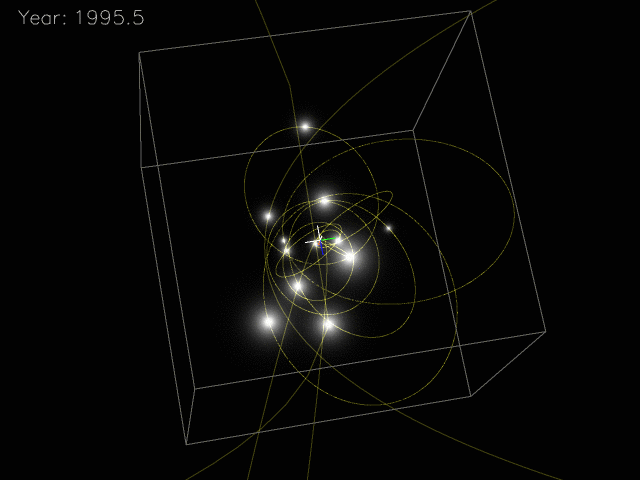
People Among Us Identify as Aliens: Inside The 'Starseed' Phenomenon
Science Alert - March 14, 2023
All of reality - including the human experiment - did not originate here.
Everyone everywhere is an insert in a simulation here to study emotions.
Asteroid Twice Manhattan's Length Hitting Earth 3.26 Billion Years Ago Triggered Tsunami And Helped Life ~ ~ Panspermia
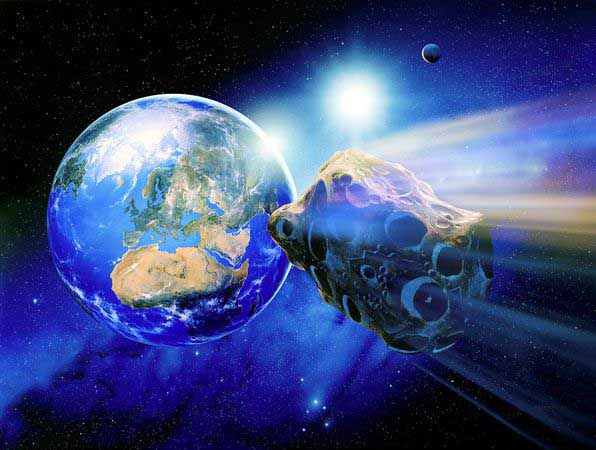
A giant meteorite boiled the oceans 3.2 billion years ago. Scientists say it was a fertilizer bomb for life CNN - October 22, 2024
A massive space rock, estimated to be the size of four Mount Everests, slammed into Earth more than 3 billion years ago - and the impact could have been unexpectedly beneficial for the earliest forms of life on our planet, according to new research. Typically, when a large space rock crashes into Earth, the impacts are associated with catastrophic devastation, as in the case of the demise of the dinosaurs 66 million years ago, when a roughly 6.2-mile-wide (10-kilometer) asteroid crashed off the coast of the Yucatan Peninsula in whatÕs now Mexico. But Earth was young and a very different place when the S2 meteorite, estimated to have 50 to 200 times more mass than the dinosaur extinction-triggering Chicxulub asteroid, collided with the planet 3.26 billion years ago, according to Nadja Drabon, assistant professor of Earth and planetary sciences at Harvard University. She is also lead author of a new study describing the S2 impact and what followed in its aftermath
Earth may have had all the elements needed for life - contrary to theories that they came from meteorites PhysOrg - December 7, 2023
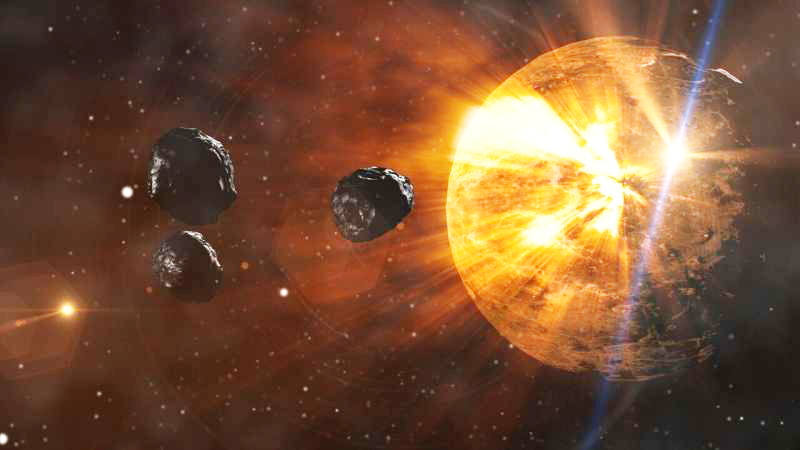
New research suggests that many of these elements, called volatiles, may have existed in the Earth from the beginning, while it formed into a planet.
RNA base in asteroid samples suggests origins of life on Earth. PhysOrg - March 25, 2023
Researchers found that approximately 50% of the EarthÕs supply of the volatile element zinc came from asteroids originating from the outer Solar System, beyond the asteroid belt which encompasses planets such as Jupiter, Saturn, and Uranus. This material is believed to have also supplied other crucial volatiles, such as water
Scientists Discover RNA Component Buried in The Dust of an Asteroid Science Alert - March 21, 2023
A sample extracted from an asteroid far from Earth has confirmed that RNA nucleobases can be found in space rocks. Analysis of dust ferried home from asteroid Ryugu has been found to contain uracil - one of the four nucleobases that make up RNA - in addition to niacin, a form of the vitamin B3, which plays an important role in metabolism.
JWST Has Found Life's Elemental Building Blocks in The Depths of Darkest Space Science Alert - January 28, 2023
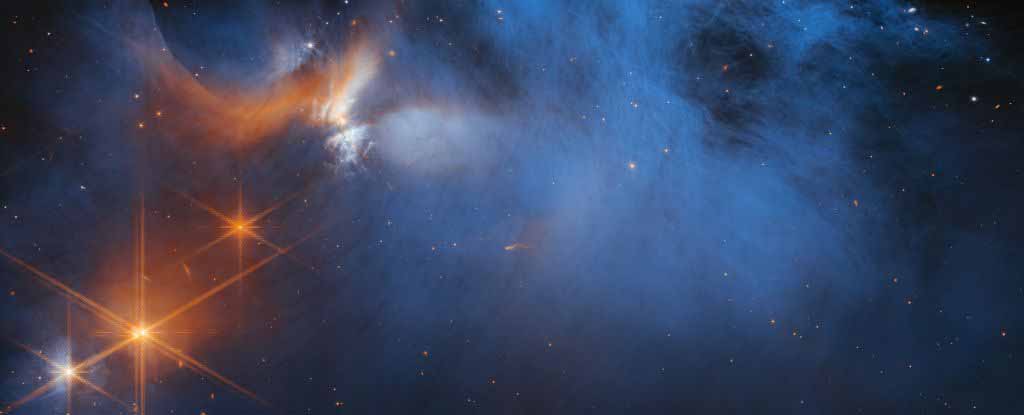
JWST's unparalleled ability to peer into the shrouded hearts of distant clouds has revealed the elements of biochemistry in the coldest and darkest place we've seen them yet. In a molecular cloud called Chamaeleon I, located over 500 light-years from Earth, data from the telescope has revealed the presence of frozen carbon, hydrogen, oxygen, nitrogen, and sulfur - elements vital to the formation of atmospheres and molecules such as amino acids, collectively known as CHONS. These elements are important components of prebiotic molecules such as simple amino acids - and thus ingredients of life, so to speak.
Meteorites could have brought all 5 genetic 'letters' of DNA to early Earth Space.com - April 26, 2022
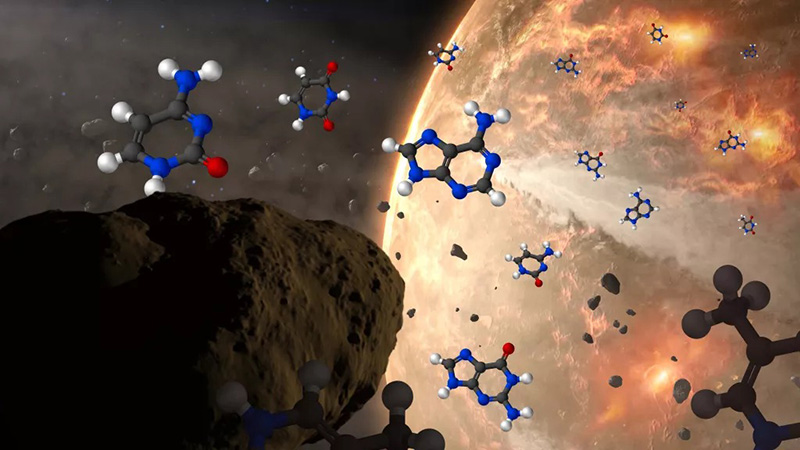
In this conceptual image of meteoroids delivering nucleobases to ancient Earth, the nucleobases are represented by structural diagrams with hydrogen atoms as white spheres, carbon as black, nitrogen as blue and oxygen as red. (Image credit: NASA Goddard/CI Lab/Dan Gallagher). Key building blocks of DNA that previous research mysteriously failed to discover in meteorites have now been discovered in space rocks, suggesting that cosmic impacts might once have helped deliver these vital ingredients of life to ancient Earth.
Galactic panspermia: How far could life spread naturally in a galaxy like the Milky Way? PhysOrg - September 27, 2021
Earth's history poses an important question when it comes to panspermia. Scientists think there wasn't enough time between when the Earth cooled enough to become habitable and the appearance of life. Not all scientists think that, of course.
There's a range of thoughts on the matter. But the question remains: Was there enough time for DNA-based life to get going independently on Earth, or did panspermia play a role? While much of the talk around panspermia concerns simple lifeforms somehow moving between stars, more serious talk concerns the movement of organic compounds necessary for life. Scientists have found some of those compounds on comets and elsewhere out in space. We now know they're not necessarily rare. So can those compounds move around from solar system to solar system?
So is panspermia a thing? Inside a solar system like ours, it seems possible. Meteorites from Mars have landed on Earth, which is pretty solid evidence. If rocks can make the trip, why not chemicals in or on those rocks? Could spores make the interstellar trip between star systems?
NASA sugar study adds support to controversial theory that the ingredients for life arrived to Earth on asteroids Daily Mail - December 19, 2018
A sugar molecule that plays a fundamental role in the existence of life could likely survive in deep space, according to a new study. NASA astrophysicists have successfully created the sugar 2-deoxyribose - or, the 'D' in DNA - in the conditions of interstellar space. The laboratory study is to first to show that the sugar can form in this setting, suggesting the building blocks for life could be widespread in the universe.
Did key building blocks for life come from deep space Science Daily - September 28, 2018
All living beings need cells and energy to replicate. Without these fundamental building blocks, living organisms could not exist. Little was known about a key element in the building blocks, phosphates, until now. Researchers have now provide compelling new evidence that this component for life was generated in outer space and delivered to Earth in its first one billion years by meteorites or comets.
Essential compounds for life have been found in crystals from two meteors that have been on Earth for nearly 20 years Daily Mail - January 10, 2018
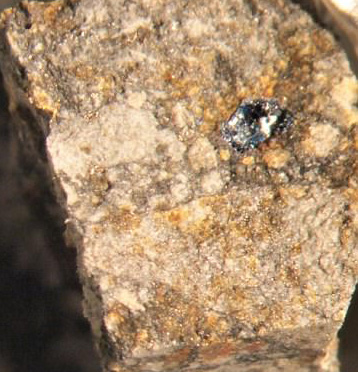
Liquid water and other organic compounds essential for life have been discovered on ancient meteorites that fell to Earth almost 20 years ago. Experts examined crystals found on Zag and Monahans, two 4.5 billion-year-old rocks from the asteroid belt between Mars and Jupiter.
Despite landing on Earth in 1998, the minerals have only now been successfully analyzed thanks to advances in technology. The new study supports previous findings by Nasa's Dawn spacecraft, which suggest that the building blocks of life may be present on neighboring asteroids.
Extraterrestrial diamond-studded 'HypatiaÕ stone found in Egypt is unlike anything seen in our solar system ever before, say scientists Daily Mail - January 12, 2018
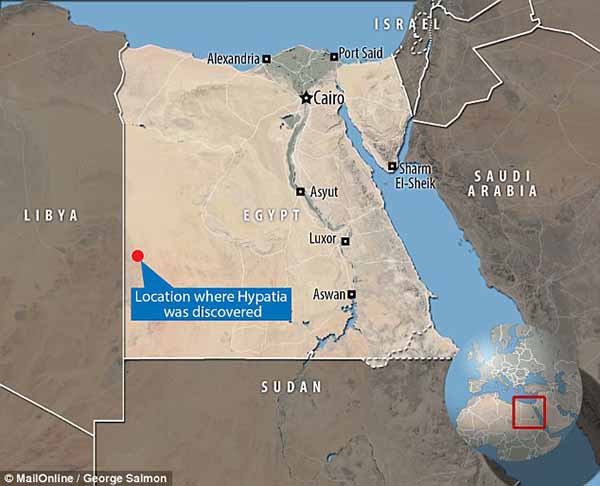
A chunk of rock which fell to Earth and was discovered in the deserts of Egypt may hold the key to our understanding of how the solar system was formed. The Hypatia stone, named for the first Western woman mathematician and astronomer, contains minerals unlike anything seen before in our solar system. Experts say the extraterrestrial object may have formed at a time when the universe was still taking shape and may predate the sun and its surrounding planets. It contains micro-mineral compounds not found elsewhere in our region of space, or in known meteorites and comets, and has the potential to rewrite the history books.
We are all made of stars: half our bodies' atoms formed beyond the Milky Way The Guardian - July 31, 2017
Nearly half of the atoms that make up our bodies may have formed beyond the Milky Way and travelled to the solar system on intergalactic winds driven by giant exploding stars, astronomers claim. The dramatic conclusion emerges from computer simulations that reveal how galaxies grow over aeons by absorbing huge amounts of material that is blasted out of neighboring galaxies when stars explode at the end of their lives.
Spreading life throughout the universe PhysOrg - October 19, 2015
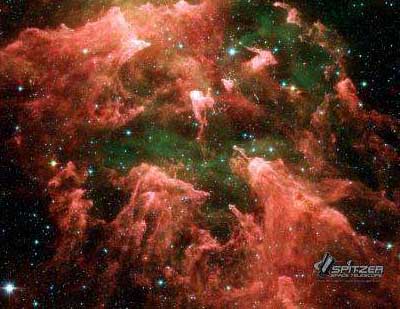
Panspermia hypothesis proposes that life travels between stars and planets, surviving the effects of interstellar journeys and finally settling down on a planetary surface, beginning new evolutionary processes. The microorganisms can be transported to random destinations by asteroids, comets or meteoroids or distributed intentionally by some intelligent alien civilization. But with Earth as the only example of a life-bearing planet, the essential question is: If panspermia really occurs, how could we detect it?
Comet impacts cook up 'soup of life' BBC - August 19, 2015
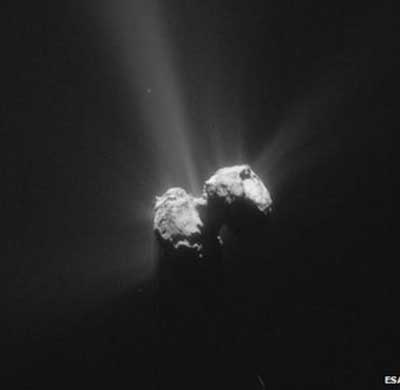
New results show how collisions between comets and planets can make molecules that are the essential building blocks of life. This suggests that the chemistry needed to gather the molecular ingredients for life could be more common than previously recognized. Earth scientists from Japan carried out experiments to mimic comet impacts that occurred on early Earth. They found chemical reactions to make the primordial "soup for life" can occur anywhere that comets collide.
Earth life 'may have come from Mars' BBC - August 28, 2013
Life may have started on Mars before arriving on Earth, a major scientific conference has heard. New research supports an idea that the Red Planet was a better place to kick-start biology billions of years ago than the early Earth was. The evidence is based on how the first molecules necessary for life were assembled.
Power behind primordial soup discovered PhysOrg - April 4, 2013

Researchers at the University of Leeds may have solved a key puzzle about how objects from space could have kindled life on Earth. While it is generally accepted that some important ingredients for life came from meteorites bombarding the early Earth, scientists have not been able to explain how that inanimate rock transformed into the building blocks of life. This new study shows how a chemical, similar to one now found in all living cells and vital for generating the energy that makes something alive, could have been created when meteorites containing phosphorus minerals landed in hot, acidic pools of liquids around volcanoes, which were likely to have been common across the early Earth.
Is An Alien Message Embedded In Our Genetic Code? Discovery - April 1, 2013
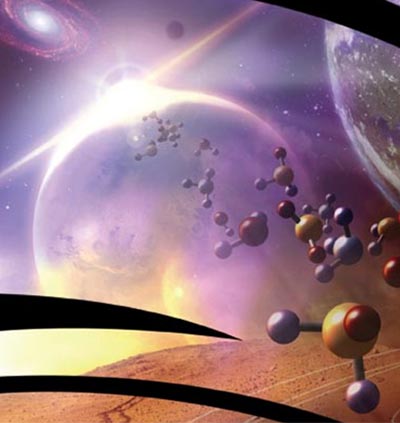
The answer to whether or not we are alone in the universe could be right under our nose, or, more literally, inside every cell in our body. Could our genes have an intelligently designed "manufacturer's stamp" inside them, written eons ago elsewhere in our galaxy? Such a 'designer label' would be an indelible stamp of a master extraterrestrial civilization that preceded us by many millions or billions of years. As their ultimate legacy, they recast the Milky Way in their own biological image. We know so little about the origin of life on Earth it seems presumptive to identify genetic structure that supposedly defies a natural explanation. Even the discovery of life elsewhere in the solar system would not provide an independent test of this idea. Panspermia could have naturally occurred among the planets and moons. And, even if the genetic code is ultimately considered the handprint of an extraterrestrial grand designer, then who designed the designer?
Building Blocks of DNA Found in Meteorites from Space Live Science - August 8, 2011
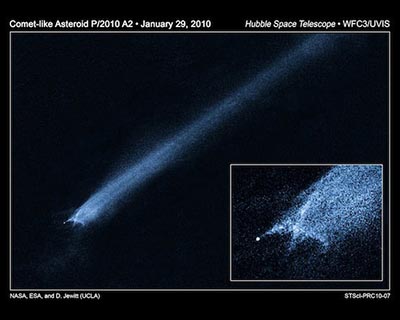
The components of DNA have now been confirmed to exist in extraterrestrial meteorites, researchers announced. A different team of scientists also discovered a number of molecules linked with a vital ancient biological process, adding weight to the idea that the earliest forms of life on Earth may have been made up in part from materials delivered to Earth the planet by from space. Past research had revealed a range of building blocks of life in meteorites, such as the amino acids that make up proteins. Space rocks just like these may have been a vital source of the organic compounds that gave rise to life on Earth.
Meteorites 'could have carried nitrogen to Earth' BBC - March 1, 2011
A meteorite found in Antarctica could lend weight to the argument that life on Earth might have been kick-started from space, scientists are claiming. Chemical analysis of the meteorite shows it to be rich in the gas ammonia. It contains the element nitrogen, found in the proteins and DNA that form the basis of life as we know it.
'Necropanspermia' suggested as a way of seeding life on Earth PhysOrg - November 12, 2010
Panspermia is a mechanism for spreading organic material throughout the galaxy, but the destructive effects of cosmic rays and ultraviolet light tend to mean most organisms would be destroyed or arrive on a new world broken and dead. Now Paul S. Wesson, a visiting researcher at the Herzberg Institute of Astrophysics in Canada, suggests the information contained within damaged organic material could seed new life. He terms this process necropanspermia.